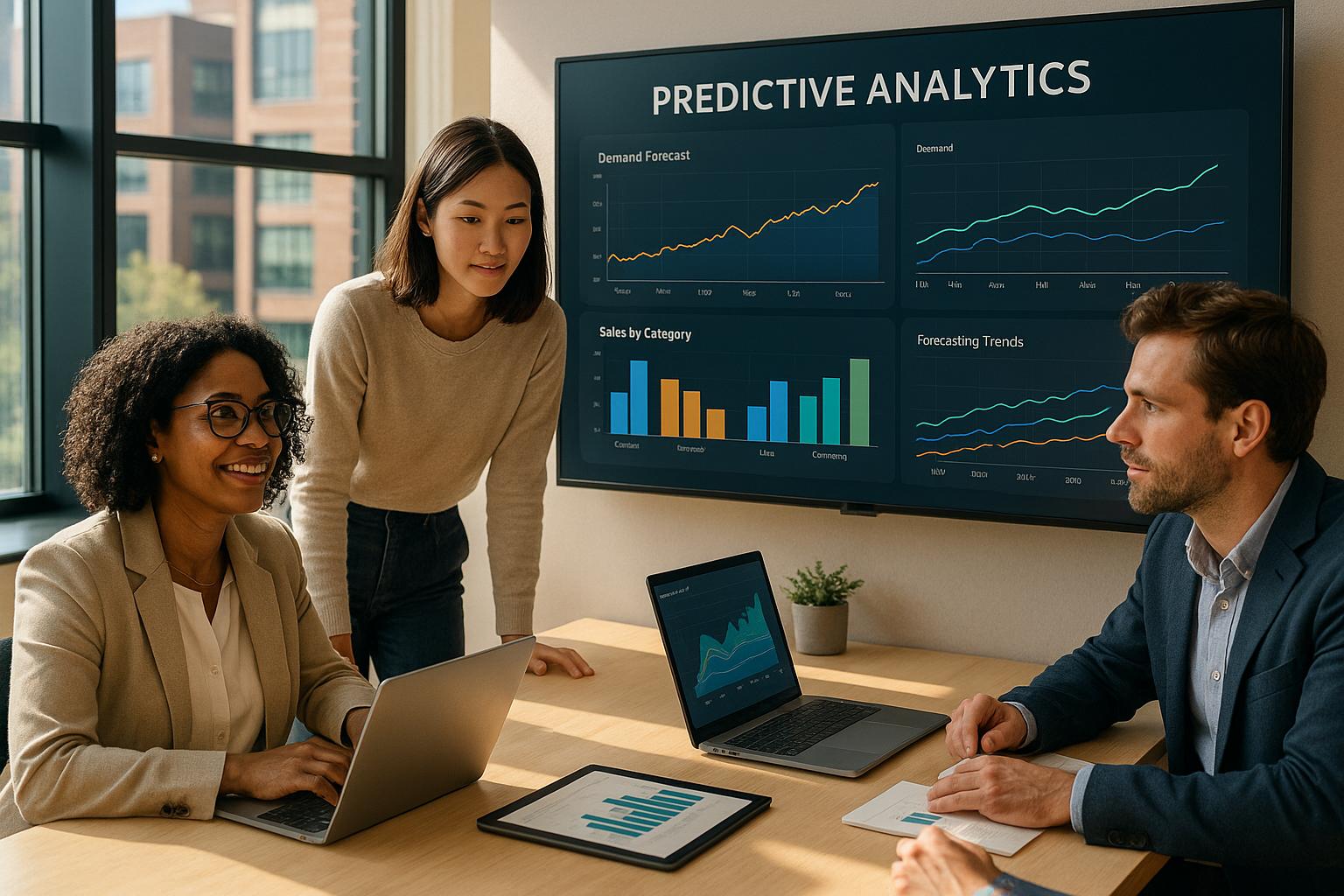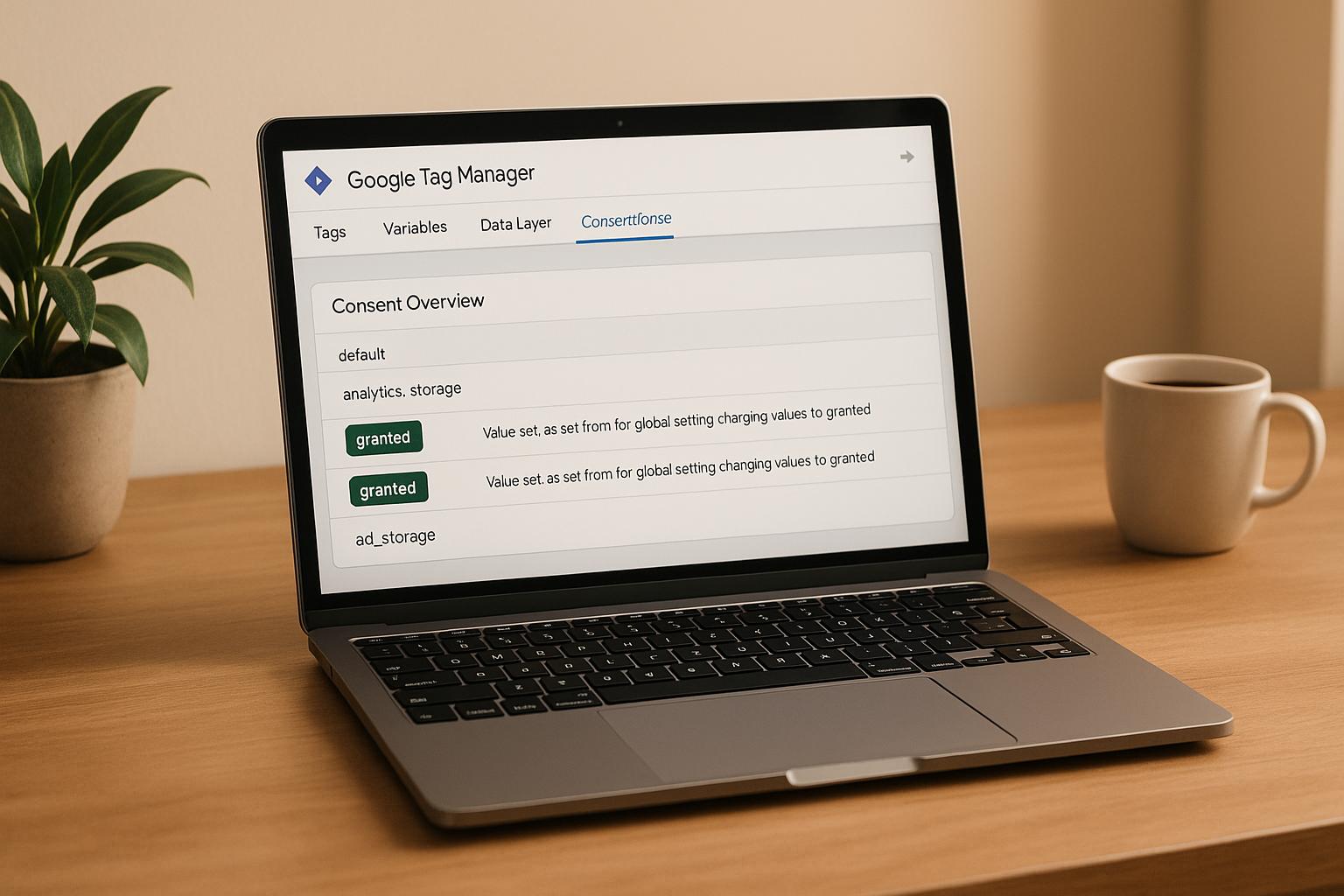Real-time data is transforming marketing in 2025. Here’s how it’s making an impact:
- AI and Predictive Analytics: AI tools predict customer behavior and adjust campaigns instantly for better ROI.
- Customer Data Platforms (CDPs): CDPs unify data from multiple sources like websites, purchases, and social media for smarter targeting.
- Privacy-Centered Analytics: Techniques like data masking and synthetic data ensure compliance with privacy laws while maintaining campaign effectiveness.
- Real-Time Performance Tracking: Tools allow live tracking of campaigns, budget adjustments, and audience targeting.
- Focus on Customer Lifetime Value (CLV): Real-time insights help reduce churn, identify upselling opportunities, and improve profitability.
Marketers are leveraging AI, privacy-focused tools, and real-time insights to create personalized, data-driven strategies while staying compliant with stricter regulations like the upcoming EU AI Act. The key to success lies in using these tools effectively and aligning them with customer needs.
Top Real-Time Data Trends in Marketing for 2025
AI and Predictive Analytics in Marketing
AI-driven predictive analytics is reshaping marketing by analyzing data to forecast customer behavior and adjust campaigns instantly. By combining historical and live data, AI tools uncover patterns and trends that manual analysis might miss.
With these systems, businesses can automatically fine-tune bid strategies, customize content, and refine audience targeting based on real-time metrics. This shift allows marketers to move from reactive to proactive approaches, improving campaign performance and ROI.
But predicting outcomes is only part of the equation. Consolidating data from various sources is just as important, and that's where Customer Data Platforms come into play.
The Role of Customer Data Platforms (CDPs)
Customer Data Platforms are essential for combining customer information from different channels. Here's how CDPs gather and use data to improve marketing efforts:
| Data Source | Type of Insights | Business Impact |
|---|---|---|
| Website Behavior | Browsing habits, preferences | More tailored user experiences |
| Purchase History | Spending patterns, frequency | Smarter audience segmentation |
| Social Media | Engagement trends, sentiment | Deeper customer understanding |
| Support Interactions | Customer pain points, feedback | Enhanced service strategies |
Privacy-Centered Analytics Models
Privacy-first analytics ensure data collection respects user consent while maintaining effectiveness. Techniques like data masking, pseudonymization, and synthetic data allow marketers to protect user privacy while still extracting actionable insights for campaign improvements.
By addressing privacy concerns, marketers can confidently use real-time data to refine strategies without compromising trust.
Real-Time Campaign Performance Tracking
Tools like Google's Meridian highlight the power of real-time insights in marketing. These platforms allow marketers to:
- Track campaign results across multiple channels
- Adjust targeting parameters on the fly
- Reallocate budgets based on performance trends
- React quickly to shifts in campaign effectiveness
Focusing on Customer Lifetime Value (CLV)
Customer Lifetime Value is now a key metric in evaluating marketing impact. Real-time data helps businesses identify churn risks, uncover upselling opportunities, develop retention strategies, and measure long-term profitability.
For businesses looking to embrace these trends, the Marketing Analytics Tools Directory offers a range of resources to compare solutions for real-time analytics, campaign tracking, and optimizing customer value.
How Real-Time Data Changes Marketing Strategies
Improving Campaigns with Real-Time Data
Real-time data is transforming how marketers optimize campaigns. According to Kantar, 41% of marketers plan to use real-time insights to boost retail media investments by 2025. This approach allows for quick adjustments to targeting, creative elements, and budgets, ensuring resources are used effectively and ROI is maximized.
| Real-Time Adjustments | Business Impact |
|---|---|
| Dynamic content & creative | Higher engagement rates |
| Automated budget optimization | Improved ROAS |
| Real-time audience targeting | Better conversion rates |
| Behavioral trigger timing | Increased response rates |
Real-time data also enables deeper personalization, making each customer interaction feel more tailored and relevant.
Scaling Personalization with AI
"AI-driven personalization builds trust and delivers tailored experiences that resonate with audiences", says Robert Harles, CEO of dig.human.
AI analyzes customer behavior instantly, adjusts content, and provides personalized recommendations, enhancing engagement across various channels. As businesses scale personalization efforts, they gain a sharper understanding of customer preferences, leading to better-informed decisions and more effective strategies.
Using Real-Time Data in Business Decisions
Even with the rise of real-time tools, 87% of marketers admit they’re not fully utilizing data, with 68% of it remaining untapped. This gap limits the ability to make strategic decisions.
"AI is no longer just a buzzword. According to Statista, this tech had a market value of over $100 billion in 2023 and is expected to jump twentyfold before 2030", notes Gary Hemming, Owner & Finance Director at ABC Finance.
Jim Reynolds, Executive Vice President - GTM, AI at Edelman PR, forecasts that by 2025, AI will reshape real-time marketing, enabling quicker, data-driven decisions.
Real-time data has become a must-have for staying competitive. Businesses can track market trends, monitor competitors, and adjust strategies instantly, making their marketing efforts more agile and responsive.
sbb-itb-5174ba0
Challenges and Opportunities in Real-Time Marketing
Navigating Data Privacy Rules
The EU AI Act, set to take effect in February 2025, introduces stricter data regulations that marketers must navigate carefully. The challenge lies in balancing the use of real-time data with compliance requirements while ensuring campaigns remain effective.
| Privacy Challenge | Solution Strategy |
|---|---|
| Obtaining consent & managing data transfers | Use automated privacy tools |
| Protecting personal data | Implement data minimization and governance practices |
| Meeting regulatory standards | Deploy real-time monitoring systems |
As these regulations evolve, solutions like synthetic data are gaining traction. This approach allows marketers to work with data that maintains privacy without sacrificing campaign performance.
The Role of Synthetic Data and Secure Computing
Synthetic data replicates customer behavior patterns while keeping personal details private. When combined with confidential computing, it enables secure data analysis during processing.
A great example is Duolingo. By leveraging synthetic data, the platform tailors user experiences, increasing engagement while safeguarding personal information.
AI in Marketing Mix Models
AI-powered Marketing Mix Models (MMMs) offer real-time insights to fine-tune cross-channel marketing strategies. These tools analyze data streams to optimize campaigns and allocate resources more effectively.
| AI MMM Capability | Business Impact |
|---|---|
| Cross-channel attribution | Enables precise budget distribution |
| Real-time adjustments | Boosts campaign ROI |
| Predictive performance analysis | Improves resource planning |
Spotify showcases this by using real-time data to personalize recommendations while respecting privacy. The success of such systems hinges on high-quality data and transparent modeling practices.
AI & Marketing Analytics in 3 Minutes
Preparing for the Future of Real-Time Marketing
In 2025, real-time data is reshaping marketing by enabling quicker decision-making, more personalized experiences, and better alignment with privacy regulations. With 87% of marketers acknowledging data as their most underutilized resource, leveraging it effectively has become a top priority. The blend of AI, privacy-centric analytics, and customer data platforms is opening up new possibilities for creating impactful campaigns.
What Lies Ahead
To remain competitive, businesses need to adopt the right tools and strategies. With 40% of brands increasing their budgets for data-driven marketing in 2025, success hinges on making smart choices about technology and its implementation. Real-time marketing isn't just about using new tools - it requires a shift in how companies engage with customers and fine-tune campaigns.
Key priorities for success in 2025 include:
- Using AI-powered analytics to automate campaign adjustments
- Developing data strategies that comply with privacy regulations
- Monitoring campaign performance in real time
- Prioritizing metrics like customer lifetime value
Laying the Groundwork
For companies navigating these changes, resources like the Marketing Analytics Tools Directory can help pinpoint the best solutions for real-time marketing needs. This is especially important as 64% of marketing leaders strongly believe that data-driven strategies are essential for business success.
The future belongs to businesses that effectively use real-time data, prioritize privacy, and deliver tailored customer experiences. Now is the time to invest in the technology and skills required to thrive in this fast-changing environment. By taking these steps, organizations can lead the way in marketing advancements for 2025 and beyond.


